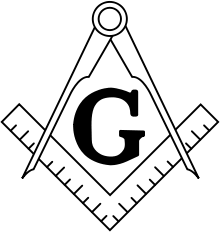Freemasonry in the Philippines
Freemasonry or Masonry refers to a civic movement promoting fraternity and good works. Freemasonry defines itself as “a regular system of morality, veiled in allegory and illustrated by symbols.[1]” In particular masonic meetings are characterized by initiations and rituals. As such masonry has been viewed historically by churches and governments as secret societies.
Its historical origins date as far back to 1717 in England, during the Enlightenment period. During that time, an intellectual movement arose throughout Europe based on rationalism, which held that only eternal truths could be attained by reason alone.
Members are organized into lodges, the basic organizational structure, which operates under the jurisdiction of a grand lodge.
Rise of Freemasonry in the Philippines
“Primera Luz Filipina”, the first masonic lodge in the Philippines was established in 1856 by Jose Malcampo Monje, a naval captain who became the Governor General of the Philippines from June 18, 1874 to February 28, 1877. It was placed under the jurisdiction of “Gran Oriente Luisitano” and admitted only Spaniards. Other lodges for foreign-born residents soon followed.
Sometime in 1869, Jacobo Zobel y Zangroniz joined the Scottish Lodge based in Nagtahan, which had been founded by the British Consul-General. It was placed under the jurisdiction of the grand lodge of Hong Kong. Zobel was made secretary of the organization. Historian Teodoro M. Kalaw wrote that Zobel was the first Filipino mason and added considerable prestige, considering that Zobel was a highly educated man who was a member of the Spanish Academy of History.
Zobel himself wrote: “Bajo estas circumstancias mis pensamientos se dirigieron—y no solamente los míos—á la única organización que podía reunir todos los elementos liberales españoles del Archipiélago y del gobierno en Manila para conseguir la conservación y el desarrollo sano de esta colonia tan importante para España. Esta organización es la masoneria bastanda propagada en España y sus colonia y enemiga del clero católico.”
Spread of Masonry among the Intelligentsia
It was a group of young Filipino students studying in Spain who helped spread the movement rapidly in Philippine circles: Marcelo H. del Pilar, Graciano Lopez Jaena, Jose Alejandrino, Ariston Bautista, Julio Llorente, Galicano Apacible, Antonio Luna, and his brother Juan, and Jose Rizal. Some of these joined Solidaridad Lodge 53 in Barcelona, Spain, and others joined Revolucion Lodge.
Upon their return to the colony, many formed lodges. On January 6, 1891, Nilad Lodge was formed in Manila. Soon others followed throughout the archipelago, even as far as Zamboanga. In 1893 these different lodges were organized under the Grand Regional Council led by Ambrocio Flores.
Such was the influence of Freemasonry in the public that even the plebeian organization Katipunan adapted masonic secret ritual and codes.
Toward independence
After the invasion of the Philippines by Americans, American soldiers formed their own lodges. Among the first were volunteers from North Dakota who organized the Knights Templar. A group of black soldiers from Missouri organized the Prince Hall Grand Lodge.
The Filipinos reorganized under Grand Master Ambrocio Flores to establish the Filipino Grand Orient in 1899. During this time the Americans did not honor the existence of the First Philippine Republic. Despite continued protests and appeals by Filipino Masons to both American and European Freemasonry to end hostilities and recognize the First Philippine Republic, the European and American Freemasons ignored the appeals and even worked against Philippine nationalism. For the remainder of this period, Philippine Freemasonry was subservient to the Grand Lodge of the United States of America.[2]
On December 19, 1912 the Grand Lodge of the Philippine Islands was formed by three American lodges: Manila 342, Cavite 350, and Corregidor 386, with Manila becoming Manila Lodge No 1. At first, Grand Lodge remained a Regional Grand Lodge, convoking its own Grand Assembly in 1915. Throughout 1915 and 1916 it was engaged with correspondence with the Grande Oriente Español in Spain, with aims toward its own independence. The long process of establishing the proper agreements finished in February 1917. The American Grand Lodge Constitution was used as a basis, keeping in mind issues such as equality of all races and working languages for ceremonies. In the same month a group of 27 lodges still under the Grande Oriente Español elected to affiliate under the Philippine Grand Lodge and Grand Officers were elected.[2]
Second World War
The first Filipino Grand Master was Manuel Quezon (later the 2nd president of the Philippines) in 1918. Masonry, along with much of life in the Philippines, was disrupted by foreign occupation during the second World War in particular from 1942 to 1945. For a time before and after the war, the Philippine Grand Lodge also held jurisdiction over some lodges in other countries such as China and Japan before those places established their own grand lodges. Their constitutions were often based on the Philippine one, as well as others such as that of the Grand Lodge of California.[3]
The Philippine version of the Scottish Rite Supreme Council 33°, the Supremo Consejo del Grado 33° para Filipinas, was founded in 1924 by Timoteo Paez.
See also
References
- ↑ "Chapter I - The Moral Teachings Of Freemasonry". www.themasonictrowel.com. Retrieved 2016-06-30.
- 1 2 "History of Masonry in the Philippines. Chronology, 1901-1918 - Philippine Center for Masonic Studies". Retrieved 2016-09-28.
- ↑ "History of Masonry in the Philippines. Chronology, 1919-2006 - Philippine Center for Masonic Studies". Retrieved 2016-09-28.
